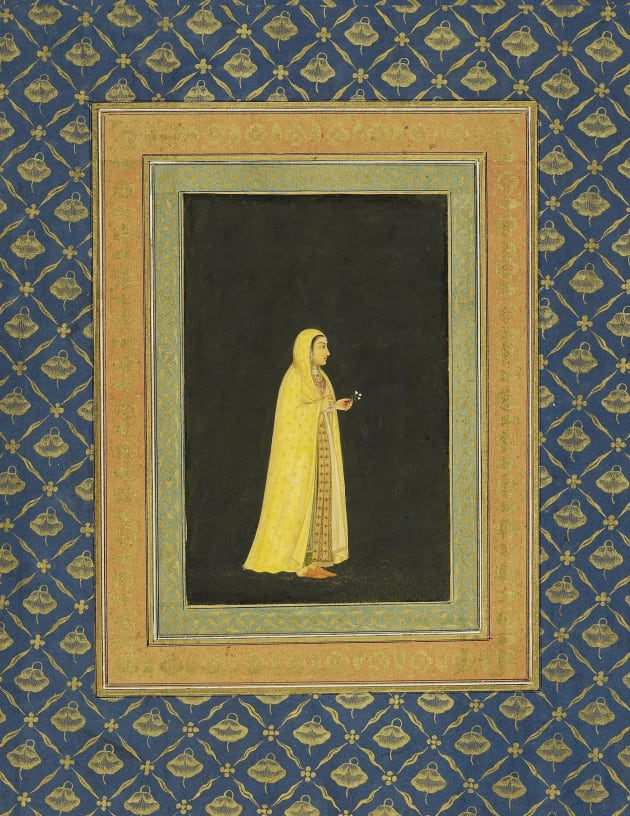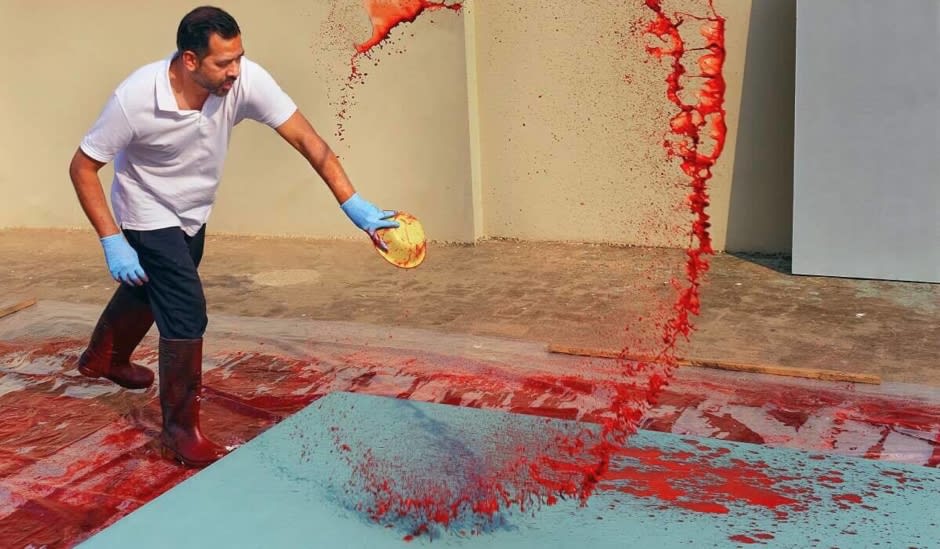

Imran Qureshi
Overview
'My work is very connected to the tradition that gave birth to it, but it also tells the story of that time in a different language and from a different perspective. I retain my voice when telling the story.'
The fragile beauty of Qureshi's work is modulated by socio-political reflections on contemporary life. The colour red is a clear allusion to the lifeblood that flows through our veins, while his flower motifs evoke the possibility of renewal and growth. A sense of balance is maintained between the dualities explored in these works, such as violence and beauty or death and regeneration, which are shown as opposing yet intertwined forces. For the artist, 'the flowers that emerge from the paint represent the hope that – despite everything – the people sustain somehow their hope for a better future'. Using the representational techniques of miniature painting to depict our modern reality, Qureshi's work speaks in part to the friction of a world in which novelty collides daily with orthodoxy.
The fragile beauty of Qureshi's work is modulated by socio-political reflections on contemporary life. The colour red is a clear allusion to the lifeblood that flows through our veins, while his flower motifs evoke the possibility of renewal and growth. A sense of balance is maintained between the dualities explored in these works, such as violence and beauty or death and regeneration, which are shown as opposing yet intertwined forces. For the artist, 'the flowers that emerge from the paint represent the hope that – despite everything – the people sustain somehow their hope for a better future'. Using the representational techniques of miniature painting to depict our modern reality, Qureshi's work speaks in part to the friction of a world in which novelty collides daily with orthodoxy.
Born in Hyderabad, Qureshi lives and works in Lahore, Pakistan. He studied miniature painting at the National College of Arts in Lahore, where he now teaches the discipline. Considered one of Pakistan's most important artists, he has received international recognition for his site-specific installations that respond to architectural space, referencing the historical or political significance of the buildings that contain them. These include Blessings Upon the Land of My Love, created in 2011 for the Sharjah Biennial, They Shimmer Still, created for the Biennale of Sydney in 2012, and Between Sacred Cities, created for the Islamic Arts Biennale 2025. In 2013, he created a large-scale, site-specific work for The Metropolitan Museum of Art’s Roof Garden Commission in New York. The same year he was awarded the Deutsche Bank’s Artist of the Year and received his first solo exhibition in Europe at the Deutsche Bank Kunsthalle in Berlin. His work has since been shown in numerous solo exhibitions, including at the Barbican Centre, London (2016) and Kunsten Museum of Modern Art, Aalborg, Denmark (2016). He has also realised site-specific projects at the Washington National Cathedral, Washington, D.C. (2018) and Al Ain, Abu Dhabi, United Arab Emirates (2018), among others.
Videos





Artworks
Exhibitions
Publications








































![Imran Qureshi Christian Louboutin, L’Exhibition[niste] at Grimaldi Forum, Monaco](https://artlogic-res.cloudinary.com/w_1200,h_816,c_limit,f_auto,fl_lossy,q_auto:good/ws-ropac/usr/images/news/main_image/items/e4/e419b47aa4044d2280b6a533825aa9a6/image00009.jpeg)






















































































































































































